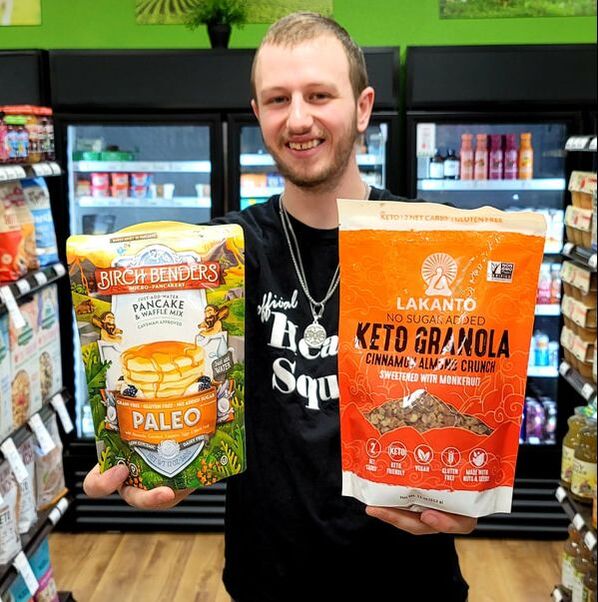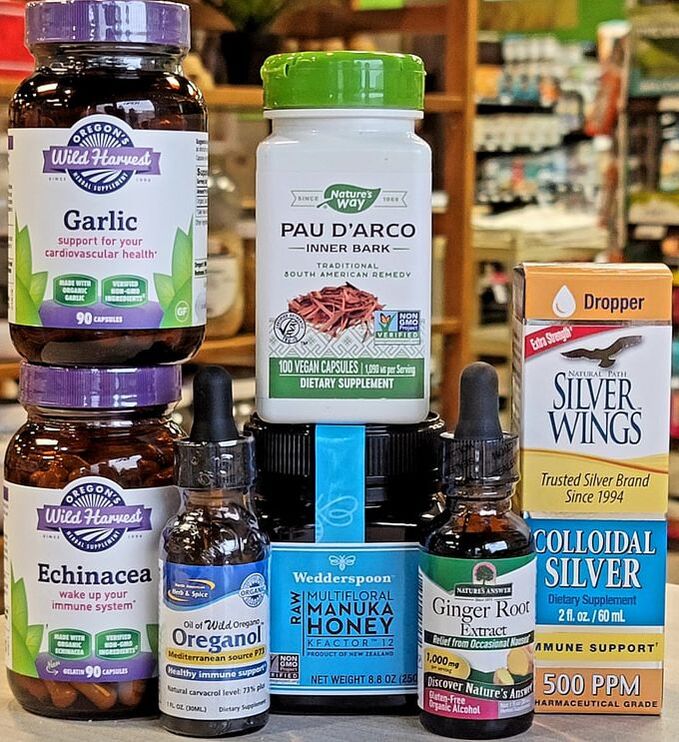 Angela Sabarese | January 23, 2023 Observance of February as Heart Month can be a reminder of the cost-saving potential of evidence-backed dietary supplements to help reduce the health impacts—and the health care costs—of coronary artery disease. The Council for Responsible Nutrition (CRN) Foundation’s recent Health Care Cost Savings report, Supplement to Savings (“S2S”), identified up to $17.74 billion in annual net savings if specific dietary supplements (omega-3 fatty acids, magnesium, vitamin K2 and soluble fiber) are used by the at-risk target populations most susceptible to coronary artery disease (CAD). The study, commissioned by the CRN Foundation and conducted by Frost & Sullivan, provides analysis on the risk reduction effects supplementation can have on specific chronic illnesses or diseases, including CAD. The Foundation announced the overall findings including insights on the analysis in August 2022. The report’s chapters on CAD focus on the following four supplement ingredient categories and their ability to address particular contributors to CAD: Omega-3 Fatty Acids–Omega-3 fatty acids containing DHA and/or EPA are one of the most well-researched dietary supplement ingredients available, including a large body of evidence supporting their contributions to cardiovascular health. The U.S. Food & Drug Administration (FDA) has permitted the use of qualified health claims for the omega-3s EPA and DHA for coronary heart disease since 2004 and for hypertension since 2019. Annual average cost savings from the widespread daily use of preventive amounts of omega-3 EPA+DHA could be $4.47 billion per year between 2022 and 2030. Magnesium–In 2022, FDA announced a qualified health claim for products containing magnesium for reduction of blood pressure, a key contributor to CAD, based on scientific research showing a link between magnesium use and blood pressure reduction, particularly during the past 10 years. Regular use of magnesium by specific at-risk populations could avoid an average of 102,382 events a year between 2022 and 2030, with an average healthcare cost savings of $2.32 billion per year. Vitamin K2–Clinical studies have shown how vitamin K2 serves to improve both cardiovascular and bone health; it is documented to have a role in minimizing coronary artery calcium accumulation, a risk factor for CAD, along with increasing calcium content in bone. The expanded targeted use of vitamin K-2 by specific populations could reduce CAD-attributed events by 15.7 percent and generate an estimated cost savings to the U.S. health are system of $9.48 billion a year between 2022 and 2030. Soluble Fiber–FDA has authorized health claims for soluble fibers from certain foods, including psyllium husk and beta-glucan from oat and barley, and their ability to reduce the risk of coronary heart disease. These ingredients are also available as dietary supplement to achieve the recommended intake levels. The S2S study found an average cost savings of $1.47 billion a year in health care costs from the increased utilization of soluble fiber for its heart healthy effects. The insights from the CRN Foundation’s report provide direct financial implications for potential long-term cost savings to individual Americans through the role these supplements play in reducing cardiovascular disease risk. “The Supplements to Savings findings demonstrate that particular ingredients, taken at preventative daily intake levels and supported by a strong track record of research that documents their effects, can not only provide heart health benefits to the target population, but also can have significant positive financial implications to our country’s health care system,” said CRN President and CEO Steve Mister. “We hope this report will help us re-think how we approach health care,” Mister continued. “Today, most of our health care resources are spent after people are already afflicted with an ailment. This analysis demonstrates the impact of some conditions, including CAD, may be reduced with appropriate supplement regimens. We hope the broader medical community will take notice and evaluate how supplements can enhance nutrition and improve the overall health of their patients.” https://vitaminretailer.com/crn-report-shows-the-potential-of-dietary-supplements-to-reduce-medical-costs-associated-with-coronary-artery-disease/?utm_medium=email&utm_campaign=vre-enews&utm_content=6b5a4c911034f4d7e6016d32e801f09f&utm_source=Robly.com&fbclid=IwAR2gBpvNk-48tpaJojXXZWH5gy7bxEdWTv6v-DJe9Fv4R0XeLtySzXGcdvQ
0 Comments
It’s Earth Day!
Today is the day we celebrate the birth of the modern environmental movement that began in the 70’s, but it’s also a day of gratitude for our home on Earth and the life it provides for us. What does this gratitude look like? It can look like hugging a tree. Watering flowers. Praying for weather that sustains our crops. Planting seeds. Picking up litter, choosing to reuse and recycle, using reusable bags when shopping, walking or biking instead of driving short distances, choosing to buy natural over synthetic... there are many ways to show gratitude for our planet! Gratitude is about praising what our Earth does for us and in return making an effort not to cause harm to it through our choices. And we make it easier for you to put the Earth first when you shop at Terry's! So you made a 2022 Resolution...
We all have to start somewhere! Beginning with a commitment is the most important step in achieving your goals, and what better time to commit than the New Year?
How is your New Year diet going so far? Did you know that the average New Year resolution lasts for 2 weeks? That's often because we dream up an end goal, but we don't decide on a solid plan of how to get there. Just joining a gym isn't enough to keep the commitment. Just deciding to eat "healthier food" isn't enough to keep on track. This blog can help you get on back on track with an overview of do-able and sustainable dietary programs and lifestyle changes. When you understand how the diets work, it is a lot easier to turn the diet into a lifestyle, which is much easier to stick to because it becomes a part of your routine. While quick-fix diets can leave you hungry and unsatisfied (potentially leading to binges or too many cheats), healthy lifestyle food choices makes you feel satisfied, strong, and able to maintain results long-term. When you discover what foods make you feel good, strong, and energetic, it will be a lot easier to to say "no" to foods that do not promote your wellness. This blog is not meant to be medical advice. It is always best to consult with your doctor if you have health concerns. Dietary changes can have powerful impacts on our health! Antibiotics can be necessary....
Respiratory infections. Sinus infections. Cuts and scrapes. Acne. UTI. SIBO. And more. But did you know there are plants and minerals with natural antibacterial properties? This blog will teach you about different options you have to disinfect and prevent infection, naturally! This blog is not meant to replace medical advice from your doctor, and we recommend following your doctor's advice. Let's talk about NAC: one of the most popular amino acids on the market today! In fact, we have to limit the sale of it to 2 per household or we would never be able to keep any in stock!
Many health experts have been promoting this for immune support, but did you know that's not the benefit it is best known for? Let's explore what NAC is...  What does “organic” mean? The term “organic” refers to the way agricultural products are grown and processed. While the regulations vary from country to country, in the U.S., organic crops must be grown must be grown without the use of synthetic herbicides, pesticides, and fertilizers, or bioengineered genes (GMOs). Organic livestock raised for meat, eggs, and dairy products must be raised in living conditions accommodating their natural behaviors (such as the ability to graze on pasture) and fed organic feed and forage. They may not be given antibiotics, growth hormones, or any animal by-products. The benefits of organic food How your food is grown or raised can have a major impact on your mental and emotional health as well as the environment. Organic foods often have more beneficial nutrients, such as antioxidants, than their conventionally-grown counterparts and people with allergies to foods, chemicals, or preservatives may find their symptoms lessen or go away when they eat only organic foods. Organic produce contains fewer pesticides. Chemicals such as synthetic fungicides, herbicides, and insecticides are widely used in conventional agriculture and residues remain on (and in) the food we eat. Organic food is often fresher because it doesn’t contain preservatives that make it last longer. Organic produce is sometimes (but not always, so watch where it is from) produced on smaller farms nearer to where it is sold. Organic farming tends to be better for the environment. Organic farming practices may reduce pollution, conserve water, reduce soil erosion, increase soil fertility, and use less energy. Farming without synthetic pesticides is also better for nearby birds and animals as well as people who live close to farms. Organically raised animals are NOT given antibiotics, growth hormones, or fed animal byproducts. Feeding livestock animal byproducts increases the risk of mad cow disease (BSE) and the use of antibiotics can create antibiotic-resistant strains of bacteria. Organically-raised animals tend to be given more space to move around and access to the outdoors, which help to keep them healthy. Organic meat and milk can be richer in certain nutrients. Results of a 2016 European study show that levels of certain nutrients, including omega-3 fatty acids, were up to 50 percent higher in Understanding GMOs The ongoing debate about the effects of GMOs on health and the environment is a controversial one. In most cases, GMOs are engineered to make food crops resistant to herbicides and/or to produce an insecticide. For example, much of the sweet corn consumed in the U.S. is genetically engineered to be resistant to the herbicide Roundup and to produce its own insecticide, Bt Toxin. GMOs are also commonly found in U.S. crops such as soybeans, alfalfa, squash, zucchini, papaya, and canola, and are present in many breakfast cereals and much of the processed food that we eat. If the ingredients on a package include corn syrup or soy lecithin, chances are it contains GMOs. GMOs and pesticides The use of toxic herbicides like Roundup (glyphosate) has increased 15 times since GMOs were introduced. While the World Health Organization announced that glyphosate is “probably carcinogenic to humans,” there is still some controversy over the level of health risks posed by the use of pesticides. Are GMOs safe? While the U.S. Food and Drug Administration (FDA) and the biotech companies that engineer GMOs insist they are safe, many food safety advocates point out that no long term studies have ever been conducted to confirm the safety of GMO use, while some animal studies have indicated that consuming GMOs may cause internal organ damage, slowed brain growth, and thickening of the digestive tract. GMOs have been linked to increased food allergens and gastro-intestinal problems in humans. While many people think that altering the DNA of a plant or animal can increase the risk of cancer, the research has so far proven inconclusive. Does organic mean pesticide-free? As mentioned above, one of the primary benefits of eating organic is lower levels of pesticides. However, despite popular belief, organic farms do use pesticides. The difference is that they only use naturally-derived pesticides, rather than the synthetic pesticides used on conventional commercial farms. Natural pesticides are believed to be less toxic, however, some have been found to have health risks. That said, your exposure to harmful pesticides will likely be lower when eating organic. What are the possible risks of pesticides? Most of us have an accumulated build-up of pesticide exposure in our bodies due to numerous years of exposure. This chemical “body burden” as it is medically known could lead to health issues such as headaches, birth defects, and added strain on weakened immune systems. Some studies have indicated that the use of pesticides even at low doses can increase the risk of certain cancers, such as leukemia, lymphoma, brain tumors, breast cancer and prostate cancer. Children and fetuses are most vulnerable to pesticide exposure because their immune systems, bodies, and brains are still developing. Exposure at an early age may cause developmental delays, behavioral disorders, autism, immune system harm, and motor dysfunction. Pregnant women are more vulnerable due to the added stress pesticides put on their already taxed organs. Plus, pesticides can be passed from mother to child in the womb, as well as through breast milk. The widespread use of pesticides has also led to the emergence of “super weeds” and “super bugs,” which can only be killed with extremely toxic poisons like 2,4-Dichlorophenoxyacetic acid (a major ingredient in Agent Orange). Does washing and peeling get rid of pesticides? Rinsing fresh produce reduces but does not eliminate pesticides. Peeling sometimes helps, but valuable nutrients often go down the drain with the skin. The best approach: eat a varied diet, wash and scrub all produce thoroughly, and buy organic when possible. The best bang for your buck when shopping organic Organic food is often more expensive than conventionally-grown food. But if you set some priorities, it may be possible to purchase organic food and stay within your food budget. Know your produce pesticide levels Some types of conventionally-grown produce are much higher in pesticides than others, and should be avoided when possible. Others are low enough that buying non-organic is relatively safe. Fruits and vegetables where the organic label matters most According to the Environmental Working Group, a nonprofit organization that analyzes the results of government pesticide testing in the U.S., the following fruits and vegetables have the highest pesticide levels, so are best to buy organic:
Fruits and vegetables you DON’T need to buy organic Known as the “Clean 15”, these conventionally-grown fruits and vegetables are generally low in pesticides:
In the U.S., industrially-raised animals may be fed corn, grains, antibiotics, animal byproducts, growth hormones, pesticides, and sewage sludge. These practices can have health consequences for both the animals themselves and people consuming their meat, eggs, or milk. If you can afford to pay the higher prices, look for beef and dairy products labeled “pasture raised” or “100% grass fed.” For pork, chicken, or eggs, look for a “certified organic” label. You may find that buying cheaper cuts of meat from organically raised animals enables you to eat organic without breaking your food budget. Try buying organic chicken thighs instead of conventionally raised chicken breasts, for example. Other ways to keep the cost of organic food within your budget Shop at farmers’ markets. Many cities, as well as small towns, host a weekly farmers’ market, where local farmers sell their produce at an open-air street market, often at a discount to grocery stores. Join a food co-op. A natural foods co-op, or cooperative grocery store typically offers lower prices to members, who pay an annual fee to belong. These fee's usually run a few hundred dollars so be sure that you are spending enough a year to make the fee worth it. Join a Community Supported Agriculture (CSA) farm, in which individuals and families join up to purchase “shares” of produce in bulk, directly from a local farm. Local and organic! Organic food buying tips Buy in season. Fruits and vegetables are cheapest and freshest when they are in season. Find out when produce is delivered to your market so you’re buying the freshest food possible. Shop around. Compare the price of organic items at the grocery store, the farmers’ market, online, and in other venues (even the freezer aisle). Remember that organic doesn’t always equal healthy. Making junk food sound healthy is a common marketing ploy in the food industry but organic baked goods, desserts, and snacks are usually still very high in sugar, salt, fat, or calories. It pays to read food labels carefully. Why is organic food often more expensive? Organic food is more labor intensive since the farmers do not use synthetic pesticides, chemical fertilizers, or drugs. Organic certification is expensive and organic feed for animals can cost twice as much. Organic farms tend to be smaller than conventional farms, which means fixed costs and overhead must be distributed across smaller produce volumes without government subsidies. Source: https://www.helpguide.org/articles/healthy-eating/organic-foods.htm The school year is about to start and you're meticulously checking off your list of school supplies as you buy them.... but wait, have you stopped by Terry's yet!? Have you stocked up on healthy foods and supplements to help your children thrive this school year? We can help with that!
Our Back to School display is up and ready! We have a great variety for your young students... This blog is about a sticky subject, but thankfully it doesn’t stink! Summer is heating things up, so it's time to explore this embarrassing subject.
Body odor... we're so worried about offending others with our stink that we do whatever it takes to not smell foul. But how well does your typical anti-perspirant work to control your body odor? And are the natural deodorants actually effective? Ashwagandha is a supplement that you might be hearing a lot about lately, but what is it? Lydia explains this amazing "apoptogenic" herb in this video: |
AuthorThe Health Squad is here to help guide you through this crazy chemical and toxin ridden world. We will provide tips to living a more natural lifestyle. Archives
January 2023
Categories |











 RSS Feed
RSS Feed